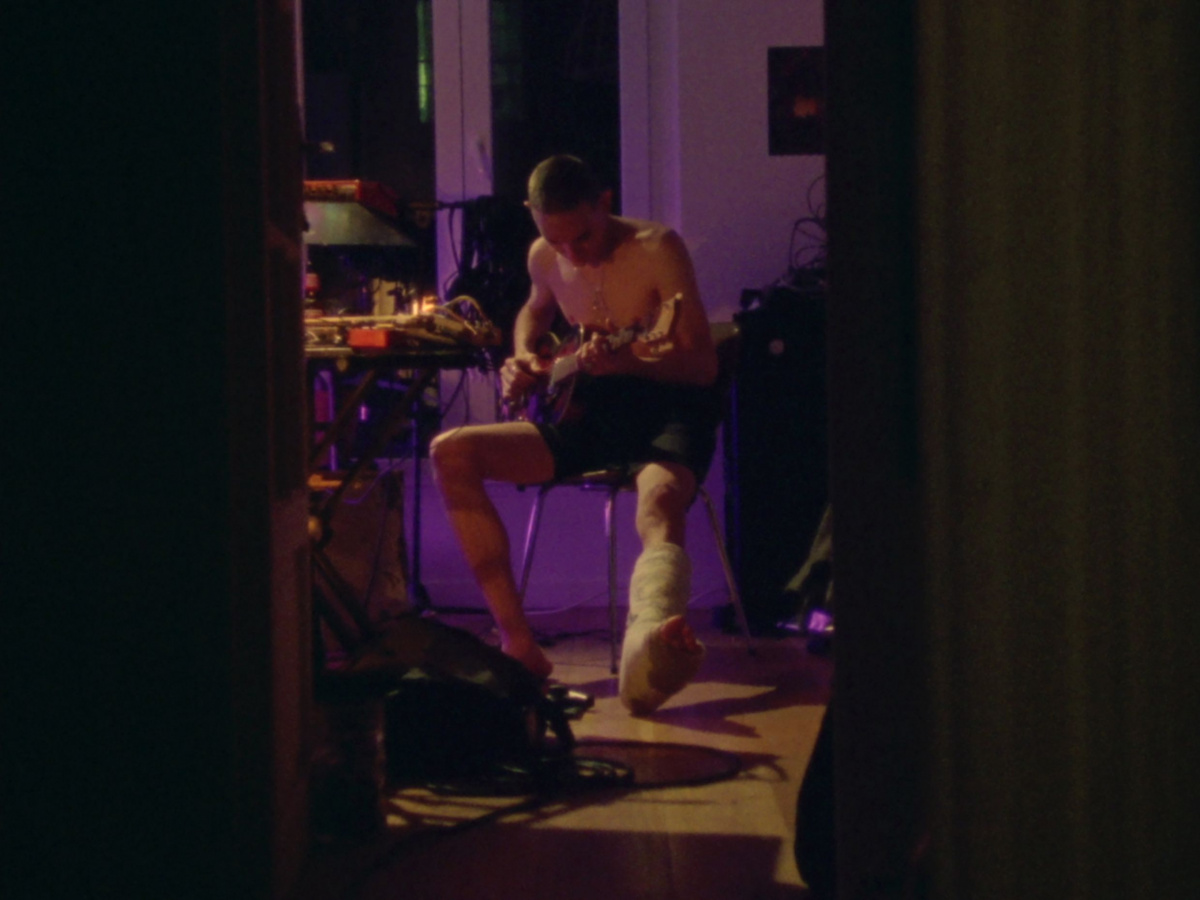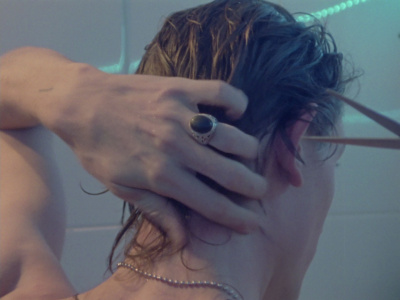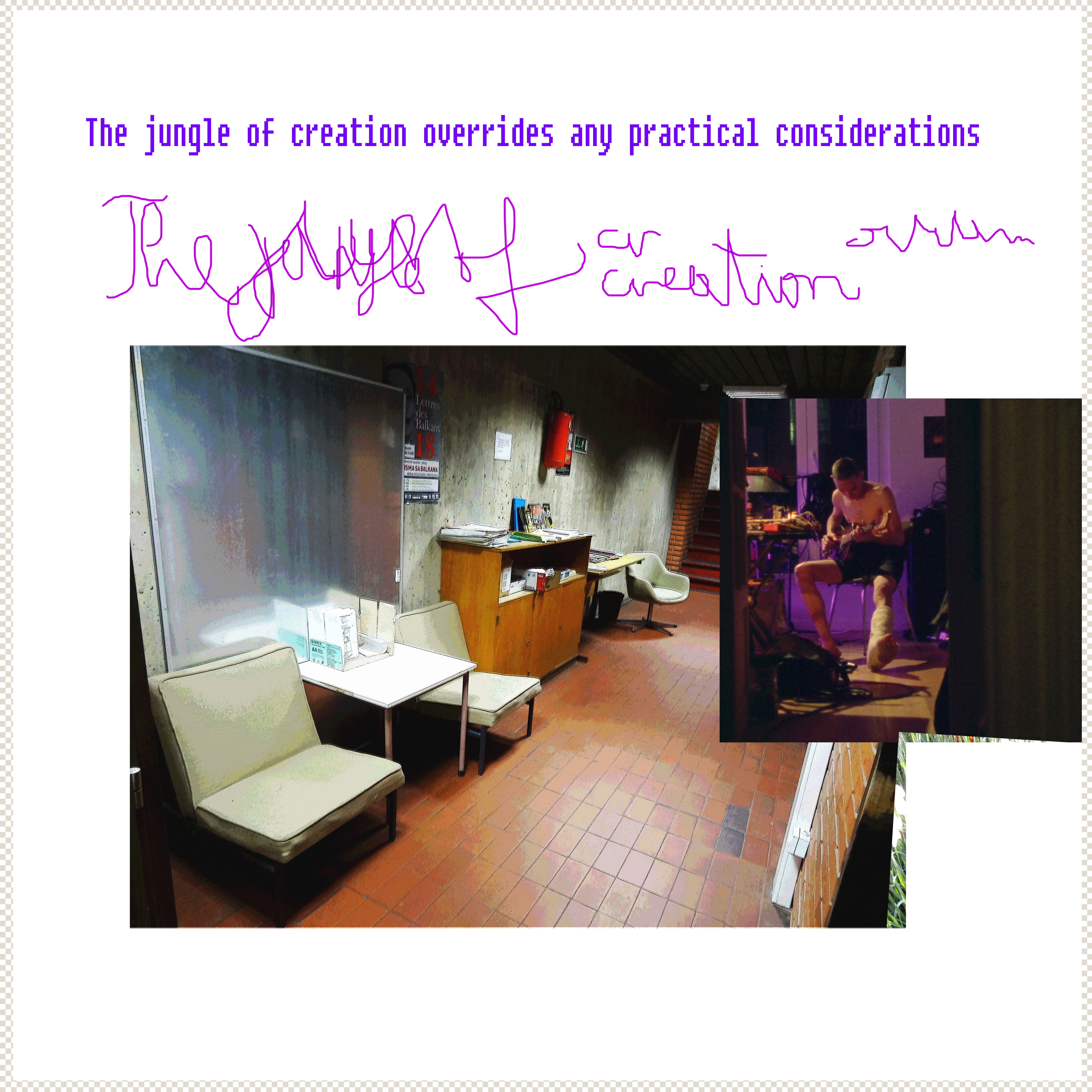
A Spirit Guides You
Through a languid although mundane mise en scène in a tiny Parisian flat, the film Journey Through a Body by Camille Degeye contrasts the romantic with the banal. Her muse, a Swiss-German musician, is powered by a creative impulse that can’t be ignored, a passion whose two-edged effects are evident even to writer Steph Kretowicz.
→ Check all articles of this special
→ Download PDF with introduction and table of contents
There’s a moment in Camille Degeye’s Journey Through a Body where an excerpt of Les Blank’s Burden of Dreams documentary plays through her protagonist’s MacBook Pro. Werner Herzog describes the wild jungle that surrounds him as having «a harmony of overwhelming and collective murder», clarifying that he means that with the utmost admiration: «It’s not that I hate it, I love it. I love it very much. In fact, I love it against my better judgement».
Here lies the central tenet of Degeye’s film and its relationship to a notion of creative impulse. The excerpt presages a sequence where the main character, called Thomas and played by real-life musician and the director’s friend Thomas, is in the grip of an artistic burst. The scene is marked by close ups of parts of his half-naked body – limbs, shoulders, a fragment of his forearm, the back of his neck – accompanying an extended musical performance that only grows in volume and intensity.

A Story in Two Parts
The moment marks a clear switch in tone between two contrasting parts of Journey Through a Body. The intimacy and isolation of night-time introspection becomes only more alienated by the bureaucracy that intrudes on this lonely little apartment the following morning, as Thomas listens to a tape player while an inspector arrives at the door unannounced, ready to take away his welfare.
It’s surely no accident that the French-language short film’s English title is identical to the name of the 1981 Throbbing Gristle album – produced for radio in five days with no plan, except that each song should represent a part of the body. In the movie, creative disciplines and mediums are overlaid and entangled. Reality and fiction, analog and digital formats loop and fold in on each other, while the Swiss-German artist’s own story of breaking his leg informs the unscripted side of the twofold film.
The Irrepressible Jungle
There’s a timelessness to the music and its relationship to technology in Journey Through a Body. Thomas watches tutorials for circuit bending noise dolls on his laptop, tinkers with his modular synths and self-made pedals, plays a noisy electric guitar with a stringed bow. The film is shot in 16mm, accommodated by Degeye’s affiliation with French analog lab and experimental collective L’Abominable.
Given she was born in 1990, this choice seems less nostalgic than it is anachronistic – in the sense that time collapses into these various instruments and devices featured in the film from across eras. Its initial dreamlike sequences, where the audience becomes intimately acquainted with Thomas’ body and daily routine, are inevitably invaded by the harsh light of reality.
And yet, the irrepressible jungle of creation and the diverse technological ecology it draws from override any of these practical considerations, whether this is good for Thomas or not. His art is incompatible with pragmatism. As Herzog says in the extended version of his Burden of Dreams monologue, «It just hits back, that’s all. And that’s what’s grandiose about it. We have to accept that it is much stronger than we are».
The film «Journey Through a Body» by Camille Degeye was officially selected at the Norient Film Festival NFF 2021. See full program here.
This text is part of Norient’s essay publication «Nothing Sounds the Way It Looks», published in 2021 as part of the Norient Film Festival 2021.
Bibliographic Record: Rhensius, Philipp. 2021. «Editorial: NFF 2021 Essay Collection.» In Nothing Sounds the Way It Looks, edited by Philipp Rhensius and Lisa Blanning (NFF Essay Collection 2021). Bern: Norient. (Link).
Biography
Published on November 24, 2020
Last updated on April 09, 2024
Topics
From machine-assisted musicking to the struggle of creating under precarious circumstances and in a world in which work rules everything.
Ecology describes the relationships among living organisms. At Norient, we add sounds and music, asking, for instance: what does a field recording tell about the environment it was recorded?
Snap


